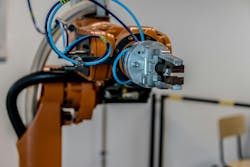Effects of Job Automation on Remodeling
Automation is pushing the American workforce (as we currently know it) toward obsolescence, and construction workers are part of that change.
That was one of the findings presented by New York-based research firm CB Insights, in a new report aimed at quantifying the current state of job automation. While construction is still at relatively low risk for human job loss, it’s clear that won’t always be the case. Another report from infrastructure giant Balfour Beatty predicts that, “The construction site of 2050 will be human-free ... The role of the human overseer will be to remotely manage [projects].”The CB Insights study found that automation in construc-tion threatens to replace approximately 1.16 million wor-kers within the next five to 10 years. The report refers to increases in drone use for site inspections and the birth of companies such as Fastbrick Robotics, which builds automated solutions for repetitive building tasks, such as brick laying.
CB Insights admits that because construction is “unstructured and dynamic” space, it still requires human supervision, and that will provide some buffer against the risk of job losses to technology. But even so, there is no doubt that in the coming decades, construction is in for some serious foundational changes.
About the Author

James F. McClister
James McClister is managing editor for Professional Remodeler.
